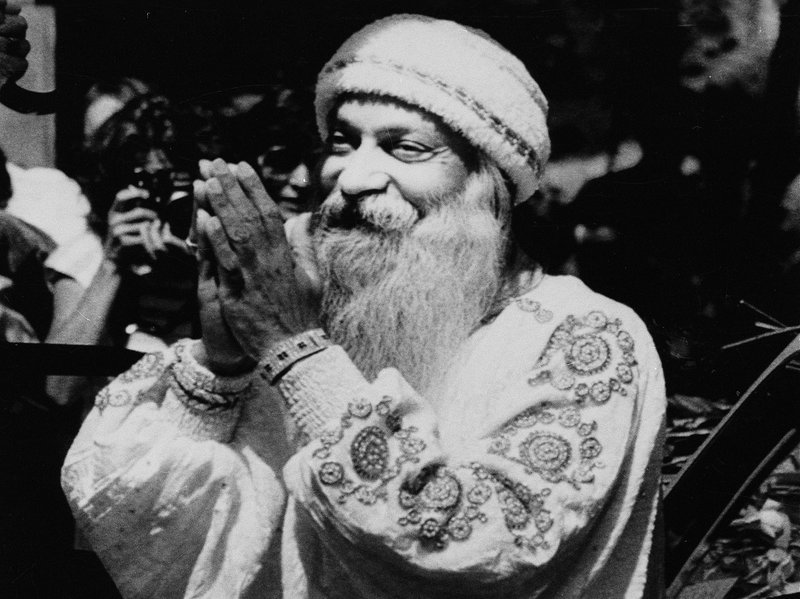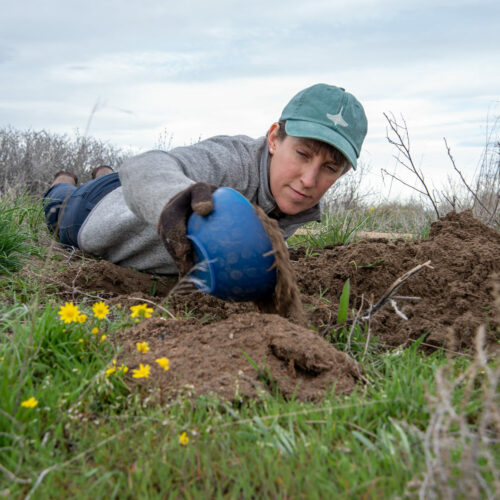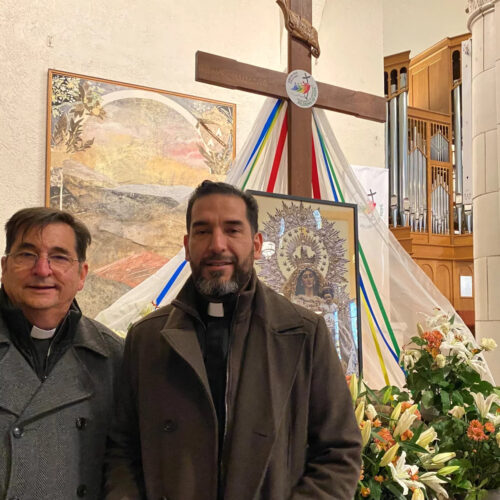
Documentary Examines Roots Of Rajneeshee Religious Group In Conflict With Rural Oregon Town
Listen
BY SARAH MCCAMMON, ALEXA HOROWITZ-GHAZI AND EMILY SULLIVAN
What began as a hopeful experiment spiraled into a historic battle between a new-age spiritual group, their rural neighbors — and eventually the federal government.
Chapman and Maclain Way explore that battle in their new Netflix six-part series, Wild Wild Country. The directors tell the story of Rajneeshpuram, a utopian community established by the followers of an Indian spiritual guru named Bhagwan Shree Rajneesh, in rural Oregon in the early 1980s.
The Rajneeshees moved into a 60,000-acre ranch near the conservative town of Antelope, and the free-loving followers quickly began to butt heads with local residents. The conflict escalated to federal charges of immigration fraud, attempted murder and the largest bioterrorism attack in United States history.
The Way brothers spoke to Weekend All Things Considered about Wild Wild Country, the American dream and how the Rajneeshees tried to take over local politics by busing more than 5,000 homeless people to Wasco County, Ore.
This interview has been lightly edited for clarity.
Interview Highlights
On Bhagwan Sri Rajneesh and what his followers believed
CHAPMAN WAY: He was kind of one of the first Indian spiritual gurus to really marry Western capitalism with Eastern mysticism. This was really appealing to very successful, highly intellectual Westerns from America and Europe who were attracted to this message of capitalism and wealth, but still being spiritual.
Bhagwan was also know as the free love guru, because his followers practiced open sex … He created this ashram in Poona, India, and soon enough Westerners around the world began flocking to listen to his teachings.

Bhagwan Shree Rajneesh, right, speaks with his disciples in this undated photo in Rajneeshpuram, Ore. Jack Smith/AP
On the spread of Bhagwan’s ideas
MACLAINE WAY: Bhagwan was kind of at an interesting time in history where we had 1960s counterculture coming to an end, and we were at the end of the 70s and getting into the early 80s, and you had a lot of Americans doing this kind of Eastern migration toward India [they were] interested in seeking. Bhagwan was able to tap into Westerners who wanted to have wealth and free sex while also walking a path of enlightenment.
America didn’t have a lot of big gurus, and I think America was seen as maybe this major league where [Bhagwan] could go and transform the consciousness of the world. Their ambitions were sky high. That’s where our series starts to pick up.
On Bhagwan’s secretary and second in command, Ma Anand Sheela, who arranged the purchase of a 60,000-acre ranch in rural Oregon, as a new home for the commune
CHAPMAN: Ma Anand Sheela is a really complex, fascinating character. She was really “the right-hand man” of this organization, and was really in charge of building this entire religious empire.
As a young girl, she had traveled to America and went to college at Montclair State University, and was familiar with America, the Constitution and the Bill of Rights, and as [the group] was starting to get more pushback in India from government officials and conservative Hindus, they were looking for a “promised land,” so to speak, where they could practice their religion in peace and harmony.

Followers of the Bhagwan Shree Rajneesh gather on Oct. 29, 1986 at the crematorium at the Rancho Rajneesh in Rajneeshpuram, Oregon, for a book-burning. AP
How did the older, more conservative ranchers and retirees next to the ranch react to their new neighbors?
CHAPMAN: I think when the Rajneeshees first arrived in eastern Oregon, it was almost as if this bizarre zombie sex cult had invaded… You saw hundreds of people dressed head-to-toe in red walking down the streets of Antelope. I think the Rajneeshees couldn’t have found a more diametrically opposed area in America to move in. It was full of ranchers, and cowboy culture, and they were all concerned with this cult that had moved in next door.
On the clashes that ensued
CHAPMAN: In 1984, the Rajneeshees were looking to take over political control of Wasco County in eastern Oregon. Part of that plan was to bus in over 5,000 homeless people from all around the world so that [the group] would have a big enough a voting block to swing Wasco County and put in their own Rajneeshees into positions of power.
Ultimately, the state of Oregon decided that some of these homeless people were not qualified to vote, and in act of what some might consider retribution or act to suppress the voting count on the other side of the issue, [the group] decided to spread a very strong strain of salmonella amongst over 10 restaurants. The belief was that if enough people got sick on election day, they would stay home and not vote.
MACLAINE: I don’t think anyone knew how this story would end up unfolding, but I certainly don’t think that they anticipated assassination attempts, trying to bus in 5,000 homeless people to take over the county, a poisoning of 751 people.
By and large, these were rational people, intelligent people, who just really were put in a situation where all three sides — government, Antelope and the Rajneeshees — just became entrenched in this sort of war.
On cults and the American Dream
CHAPMAN: One of the really fascinating components of the story is that when people think of commune, they think of communism. The interesting thing about this spiritual group was that it was actually much more of this almost extreme libertarian philosophy that you can build yourself up by your own bootstraps: They wanted to build their American dream, their own law enforcement, their own education.
On similarities between the clashing sides
CHAPMAN: One of the more absurd components of this was getting to know the Antelopians, and the Rajneeshees — it was bizarre how similar these cultures were in some ways. Antelopians pretty much did the same exact thing, they almost took the land from the Native Americans 150, 200 years ago, and built their own community with their own church in the middle of town and their own public school that taught Christianity.
Copyright 2018 NPR
Related Stories:

Ecologists help with burrowing owl ‘spring cleaning’ at Umatilla Chemical Depot
Lindsay Chiono, wildlife habitat ecologist for the Confederated Tribes of the Umatilla Indian Reservation (CTUIR), does some seasonal maintenance, or spring cleaning, on one of the 180 total artificial nesting

Washington, Idaho rank high for public health emergency preparedness
Both states saw steady or increased funding for public health, but Idaho still among lowest for vaccinations.

These churches offer shelter and sanctuary to vulnerable migrants. Here’s why
Bishop Joseph Tyson (left) and the Rev. Jesús Mariscal (right) of the Yakima Diocese worry about how their parishioners will cope with broad changes to immigration policy, which have had















